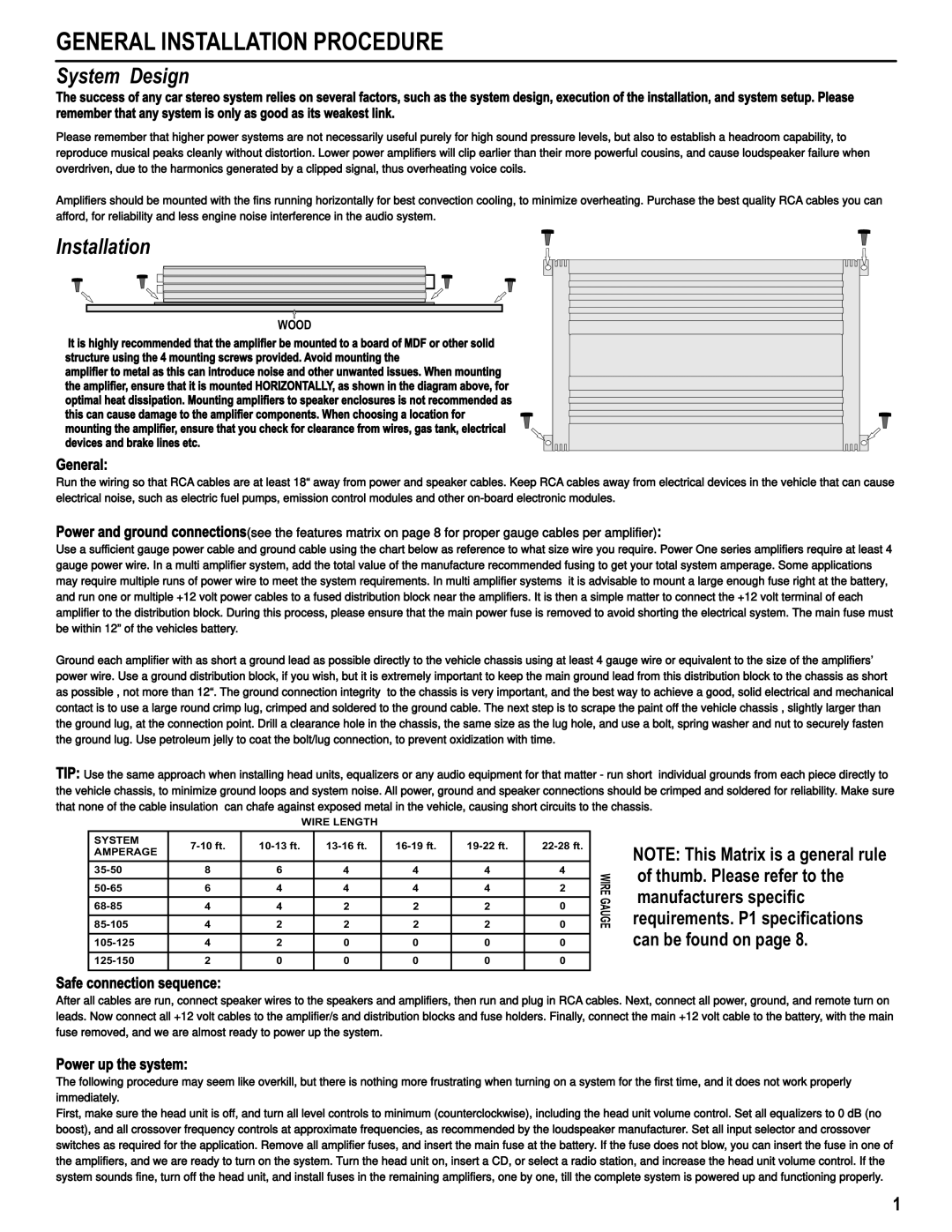P1-600.4, P1-600.2, P1-1000.4, P1-2000.1, P1-5000.5 specifications
Maxxsonics is renowned for producing high-quality audio amplifiers that cater to diverse listening demands. Among their impressive lineup, the P1 series stands out, featuring models like the P1-5000.5, P1-2000.1, P1-1000.2, P1-1000.4, and P1-600.2. These amplifiers boast a blend of power, efficiency, and advanced technologies, making them favorites among audiophiles and casual listeners alike.The Maxxsonics P1-5000.5 is a powerhouse designed for those who need significant output. It delivers a staggering 5,000 watts of peak power, making it suitable for subwoofers and large sound systems. This model features a Class D topology, ensuring high efficiency and minimal heat generation. A built-in low-pass filter allows for tailored sub-bass frequencies, enhancing the overall auditory experience.
Next in the lineup, the P1-2000.1 continues the legacy of power, providing 2,000 watts of peak power in a mono configuration. This amplifier is optimized for driving single subwoofers or multiple subwoofer setups, ensuring deep, thunderous bass response. Its frequent frequency response helps retain clarity and detail in the audio output, making it perfect for bass enthusiasts.
The P1-1000.2, with its 1,000 watts of peak power, is a versatile model designed for powering two-channel applications. Its compact design allows for easy installation while delivering impressive sound quality. Featuring a built-in crossover, users can effortlessly adjust frequency settings, making it adaptable for various speaker configurations.
For those who desire multi-channel options, the P1-1000.4 offers 1,000 watts of peak power across four channels. This makes it an excellent choice for driving a complete audio system, including front and rear speakers along with additional subwoofers. The advanced thermal management system ensures the amplifier maintains optimal performance without overheating, which is essential for long listening sessions.
Finally, the P1-600.2 is an excellent entry-level option, providing 600 watts of peak power in a compact yet efficient design. This amplifier is ideal for smaller systems, making it suitable for cars with limited space. Despite its size, the audio quality remains impressive, with clear output and dynamic range.
Overall, the Maxxsonics P1 series offers a comprehensive range of amplifiers tailored to various needs, from massive wattage for serious bass lovers to compact solutions for space-constrained environments. Each model is designed with advanced technologies and features that ensure high performance, reliability, and an exceptional listening experience. Whether you are building an intricate audio setup or seeking an upgrade, the P1 series has something to suit every audiophile's requirements.

